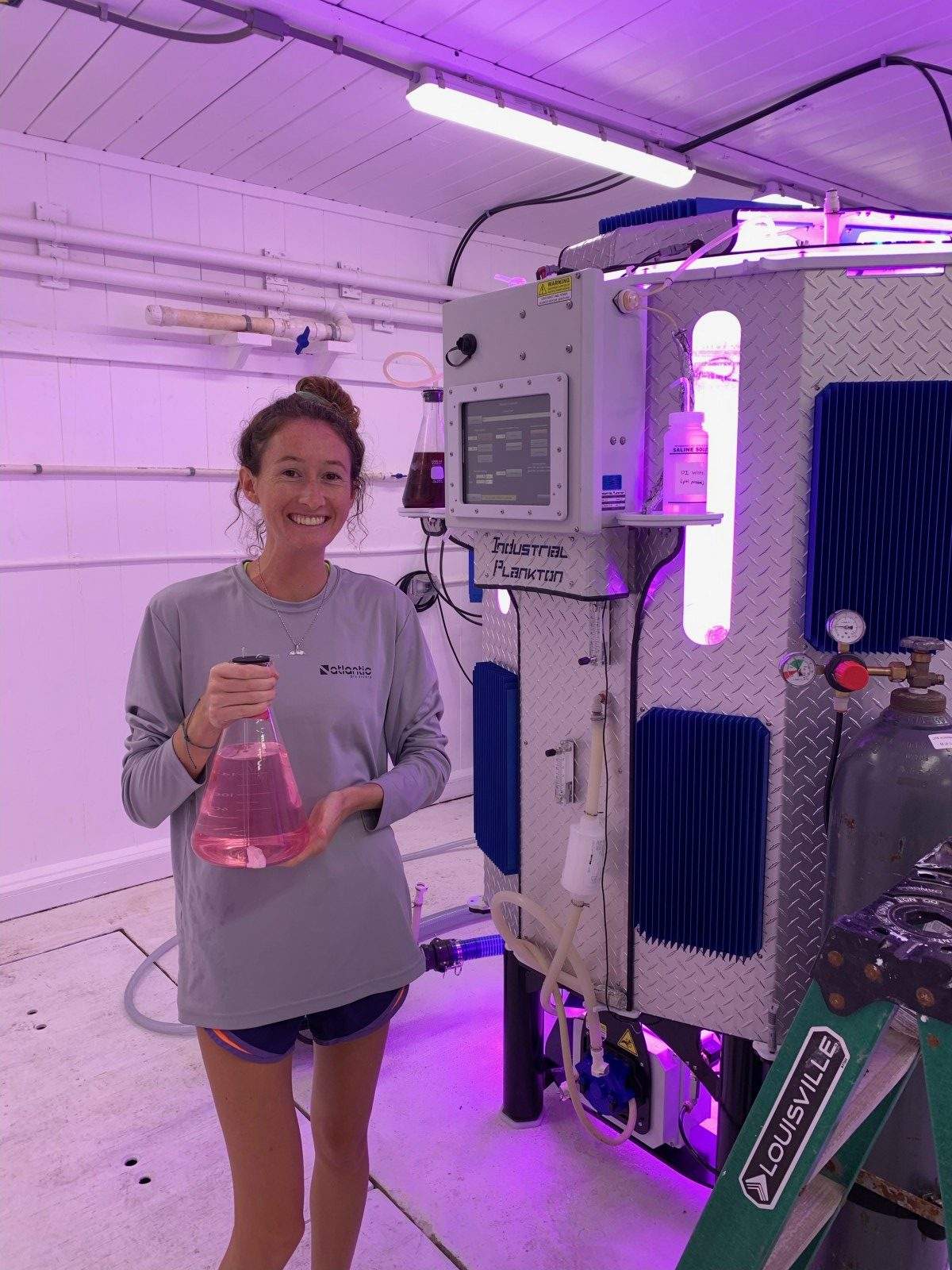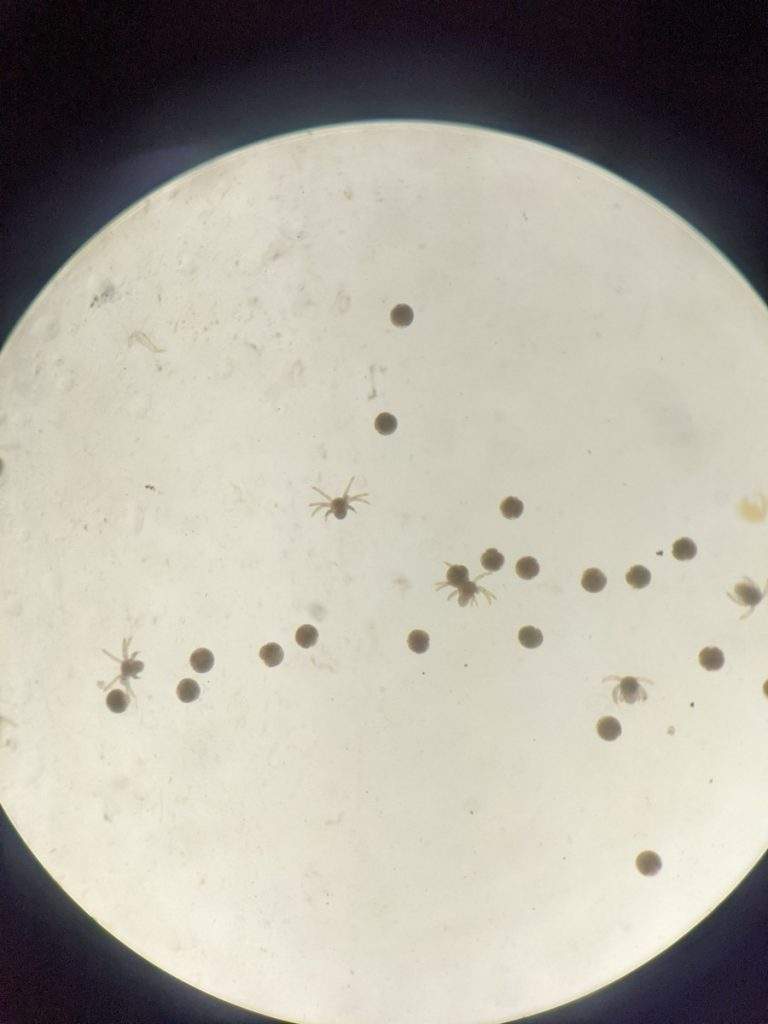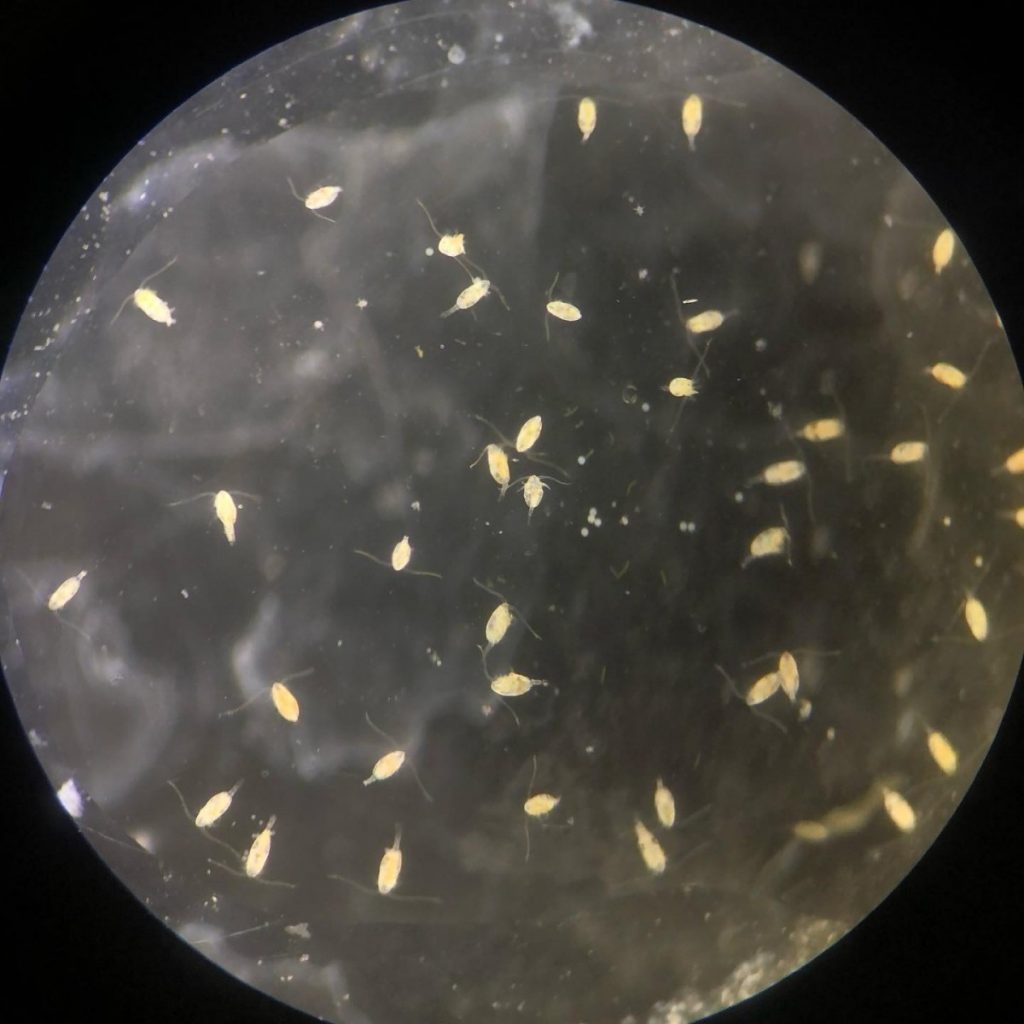July 12 2022
HPU’s Oceanic Institute
This article originally appeared in HATCHERY Feed & Management Vol 10 Issue 2 2022 by Aquafeed Media, S.L.U.
Industrial Plankton collaborates with HPU’s Oceanic Institute to increase engagement in aquaculture for native Hawaiian students
The Oceanic Institute of Hawai’i Pacific University has been a cornerstone in aquaculture for decades. Their shrimp breeding program is world renowned, and their ornamental breeding facility is home to the first fully aquacultured yellow tangs.
Through a US Dept. of Education grant designed to increase native Hawaiian student engagement in STEM disciplines using aquaculture, Oceanic Institute was able to renovate an aquaculture teaching space and secure funding to install algae bioreactors from Industrial Plankton. The bioreactors came to Oceanic Institute at a critical time when their operations were looking at needing an algae lab expansion to support their increasing demands on their algae department.

The two time-machine-like algae bioreactors landed in Hawai’i in April of 2022 and are growing two critical strains of algae for their programs: Chaetoceros muelleri and Tisochrysis lutea. Chaetoceros muelleri is required to feed the larval and post-larval shrimp that the shrimp research program uses to proliferate their family lines. Oceanic Institute pioneered the development of specific pathogen-free (SPF) shrimp stocks, which are used to enhance breeding programs worldwide. These family lines are the oldest continuously maintained lineages of Litopenaeus vannamei globally, so biosecure algae is a must.

Any C. muelleri which doesn’t go to the shrimp will go to the ornamental breeding program to feed their Parvocalanus sp. copepods. When Dr. Chatham Callan’s team first broke the code on raising larval yellow tangs, these copepods were critical as a first feed, and they continue to be vital in scaling up the production of their yellow tang. Since Hawai’i closed the ornamental fishery to protect their natural resource, the work of Dr. Callan’s lab has become even more critical to the ornamental fish industry.
The T. lutea serves two functions: it is used as background algae (or “green-water”) for the larval tanks or as a feed for the copepods. Using live algae as “green-water” has the benefits of all green-water techniques in that it provides a backdrop for efficient feeding and lowers stress for the larvae, but it also provides an ecosystem service as live algae can consume nitrogenous waste in the water.
In addition to providing additional highquality algae to fish and shrimp, these bioreactors will serve as invaluable teaching equipment.

Using these reactors, students at Hawai’i Pacific University will learn how the fundamentals of algae culture (light, nutrients, pH, etc.) are also crucial in the context of global ocean systems. The demonstration of these interactions in realtime will allow for a unique and dynamic learning experience that can impact students beyond the aquaculture space.
Industrial Plankton is thrilled to be working with the world-class shrimp and ornamental breeding teams at Oceanic Institute and overwhelmingly proud to be supporting two amazing missions, especially as they help increase the engagement of minorities in aquaculture.
